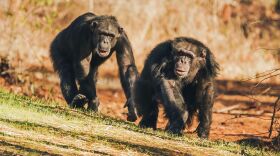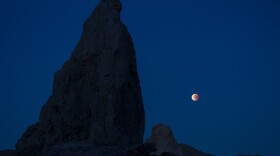
Nell Greenfieldboyce
Nell Greenfieldboyce is a NPR science correspondent.
With reporting focused on general science, NASA, and the intersection between technology and society, Greenfieldboyce has been on the science desk's technology beat since she joined NPR in 2005.
In that time Greenfieldboyce has reported on topics including the narwhals in Greenland, the ending of the space shuttle program, and the reasons why independent truckers don't want electronic tracking in their cabs.
Much of Greenfieldboyce's reporting reflects an interest in discovering how applied science and technology connects with people and culture. She has worked on stories spanning issues such as pet cloning, gene therapy, ballistics, and federal regulation of new technology.
Prior to NPR, Greenfieldboyce spent a decade working in print, mostly magazines including U.S. News & World Report and New Scientist.
A graduate of Johns Hopkins, earning her Bachelor's of Arts degree in social sciences and a Master's of Arts degree in science writing, Greenfieldboyce taught science writing for four years at the university. She was honored for her talents with the Evert Clark/Seth Payne Award for Young Science Journalists.
-
Common chemical elements are created in stars like our sun. But heavy elements, like iron, are thought to form in massive stars that explode and spew material — though it might be more complicated.
-
All chimps managed by the National Institutes of Health that are currently eligible to go to a sanctuary have been moved there, but animal welfare advocates say more should be allowed to go.
-
For infants, toddlers, and children, one sign of an especially close relationship is if two people do something that involves exchanging saliva, like taking bites from the same piece of food.
-
A new look at nearly 3.7 million-year-old fossil footprints uncovered in Tanzania shows that multiple species of early humans lived together at the same time.
-
Scientists have found many planets orbiting distant stars, but so far no proof that any have moons. Now, researchers have detected signs of a large exomoon orbiting a Jupiter-like world.
-
With the James Webb Space Telescope safely deployed, many scientists want to use it. To minimize the effect of unconscious biases, they go through a process developed for the Hubble Space Telescope.
-
A study shows how much prey whales eat. It reveals how the global loss of whales changed ocean life in ways that may make it harder for them to rebound. (Story first aired on ATC on Nov. 11, 2021.)
-
NASA's James Webb Space Telescope is waiting at its launch site, after years of repeated delays and cost overruns. At one point, the giant new observatory was threatened with cancellation.
-
As they count down the hours to the highly anticipated launch of NASA's powerful, $10 billion James Webb Space Telescope, astronomers hope for the best while fearing the worst.
-
The upcoming launch of NASA's powerful James Webb Space Telescope should let astronomers see what some of the universe's first stars and galaxies looked like soon after the Big Bang.
-
The James Webb Space Telescope will let astronomers peer farther into space than ever before, to see what galaxies looked like when the universe was newly born.
-
NASA's TESS telescope finds a small, iron-rich planet which could help explain the origins of Mercury, the innermost planet in our solar system








